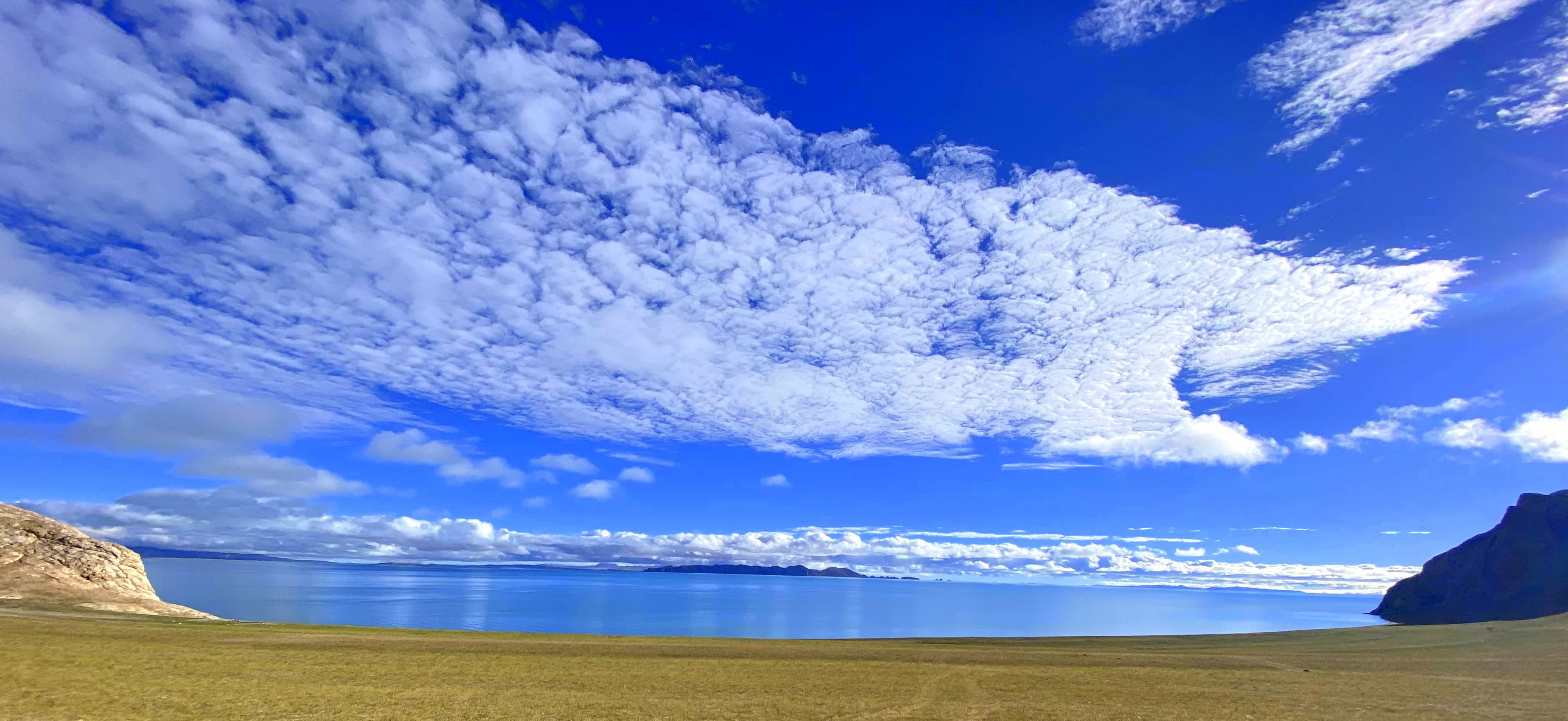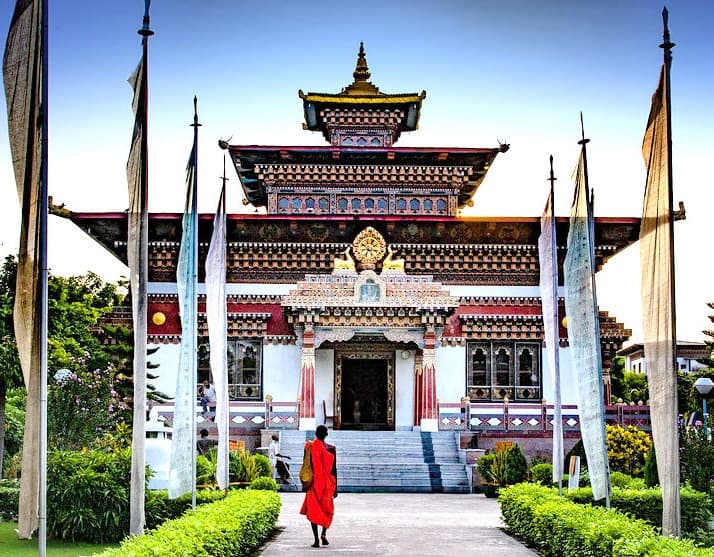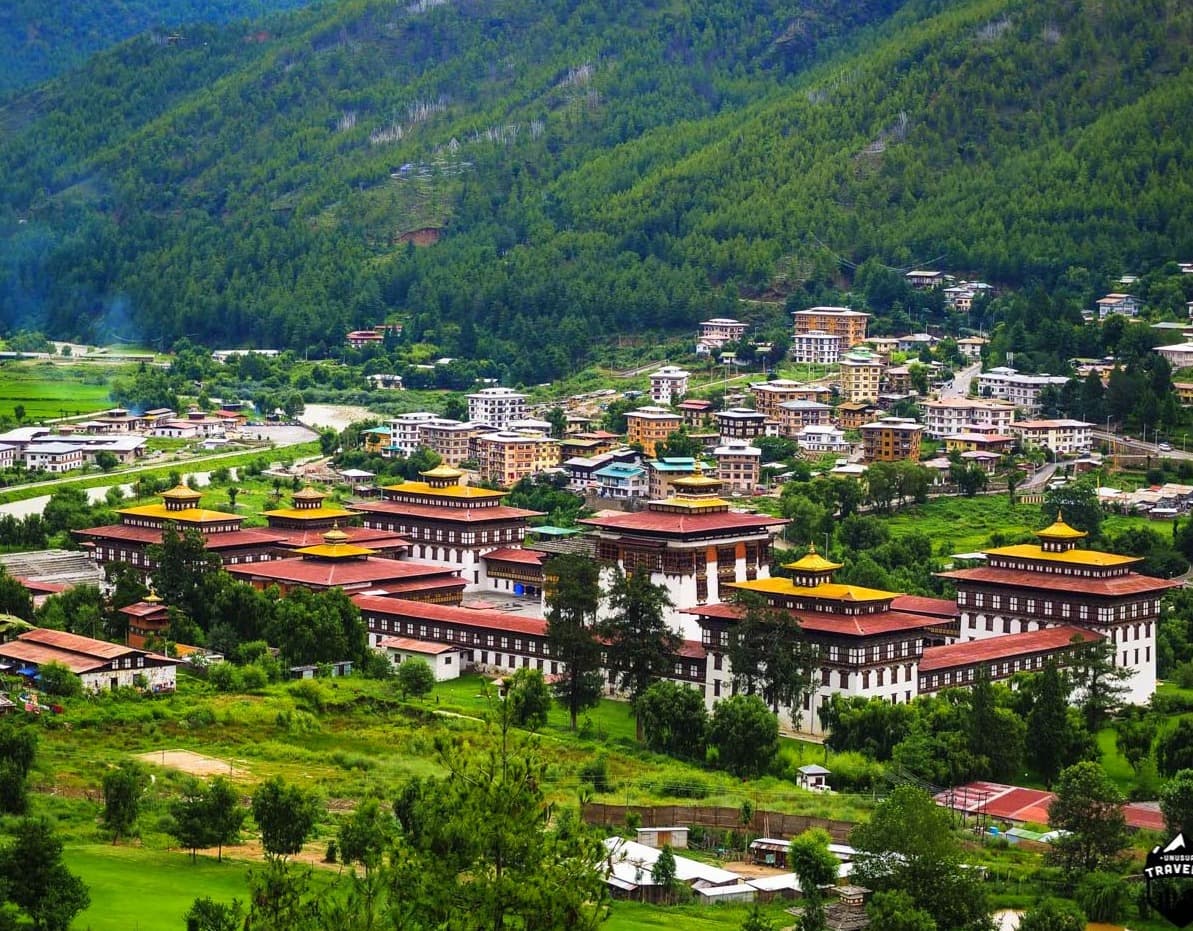- Lhasa: The Capital of Tibetan Spirituality
- Samye Monastery: Where Tibetan Buddhism Took Root
- Mount Kailash: The Pilgrim’s Ultimate Quest
- Lake Namtso: Heaven on Earth
- Tashilhunpo Monastery: Seat of the Panchen Lama
- Rongbuk Monastery and the North Face of Everest
- Best Time to Explore Tibet
- Travel Tips for the Spiritual Heart of Tibet: Ethical Practices and Breathtaking Locations
- FAQs of the Spiritual Heart of Tibet: Ethical Practices and Breathtaking Location
Tibet, often referred to as the Spiritual Heart of Tibet, offers a unique blend of profound Buddhist traditions and breathtaking landscapes. This revered destination is not only a magnet for spiritual seekers but also for those looking to engage in ethical travel practices while exploring some of the most majestic sites on earth. From the awe-inspiring heights of Mount Kailash to the ancient serenity of the Potala Palace in Lhasa, each location offers a glimpse into the soul of this mystical region. This blog will guide you through the best ethical practices to adopt while visiting these sacred sites, ensuring that your journey is respectful to both the cultural traditions and natural environment of Tibet. Join us as we explore the ethereal beauty and cultural richness of the Tibetan plateau, making every step of your travel meaningful and transformative.
At Druk Holidays, we are committed to offering tours that deeply respect the Spiritual Heart of Tibet. Our tours are designed around ethical practices to ensure that every visitor experiences the breathtaking locations of Tibet in a manner that respects both the culture and the environment. With Druk Holidays, travelers can explore the iconic Potala Palace, serene Mount Kailash, and other sacred sites with knowledgeable guides who emphasize sustainability and cultural sensitivity. Trust us to make your journey to Tibet unforgettable, supporting local communities while immersing you in the spiritual and natural beauty of the region.
Lhasa: The Capital of Tibetan Spirituality
Lhasa, the vibrant capital of Tibet, stands as a profound symbol of Tibetan spirituality. Nestled at an impressive altitude, this city is not only the administrative hub but also the spiritual heart of the region, pulsating with history and devotion.
- Jokhang Temple: The spiritual core of Lhasa: At the center of Lhasa's old town lies the Jokhang Temple, the most revered religious site in Tibet. Pilgrims from all corners of the plateau make their way here to prostrate in devotion, encircling the temple in a ritual known as kora. The Jokhang is home to many precious religious artifacts and is a superb example of Tibetan Buddhist architecture.
- Potala Palace: A majestic fortress of faith: Dominating the Lhasa skyline, the Potala Palace is an architectural marvel and a cultural treasure. Formerly the winter residence of the Dalai Lamas, this grandiose complex now serves as a museum and a symbol of Tibet's complex history. Visitors to the palace can explore its vast array of chapels, stupas, and monk quarters, each corner echoing the teachings of Buddha.
- Sera Monastery: A hub of Buddhist learning: Just outside the central city, Sera Monastery is one of the great three university monasteries of Tibet, where monks engage in daily debates on Buddhist doctrines, a practice that sharpens their wisdom and understanding. These debates are open to visitors and provide a unique insight into monastic life.
- Norbulingka: The Dalai Lama's summer retreat: Norbulingka, meaning "Jewel Garden," served as the summer palace for successive Dalai Lamas. With its lush parklands and beautiful gardens, it is a serene escape from the bustling streets of Lhasa. Today, it plays host to cultural festivals, most notably the Shoton Festival, which celebrates Tibetan opera and the arts.
Visiting Lhasa is an immersive experience that offers deep spiritual enrichment and a connection to the ancient practices that define Tibetan Buddhism. The city is not only a place of historic palaces and monasteries but also a living, breathing center of Tibetan culture and religion, making it a must-visit for anyone seeking to understand the soul of Tibet.
Samye Monastery: Where Tibetan Buddhism Took Root
Samye Monastery holds a special place in the heart of Tibetan Buddhism as the very first monastery established in Tibet. Founded in the 8th century by King Trisong Detsen, Samye marks a crucial point in Tibetan history where Buddhism took a firm root, guided by the efforts of the Indian Buddhist master Padmasambhava and the Chinese master Shantarakshita.
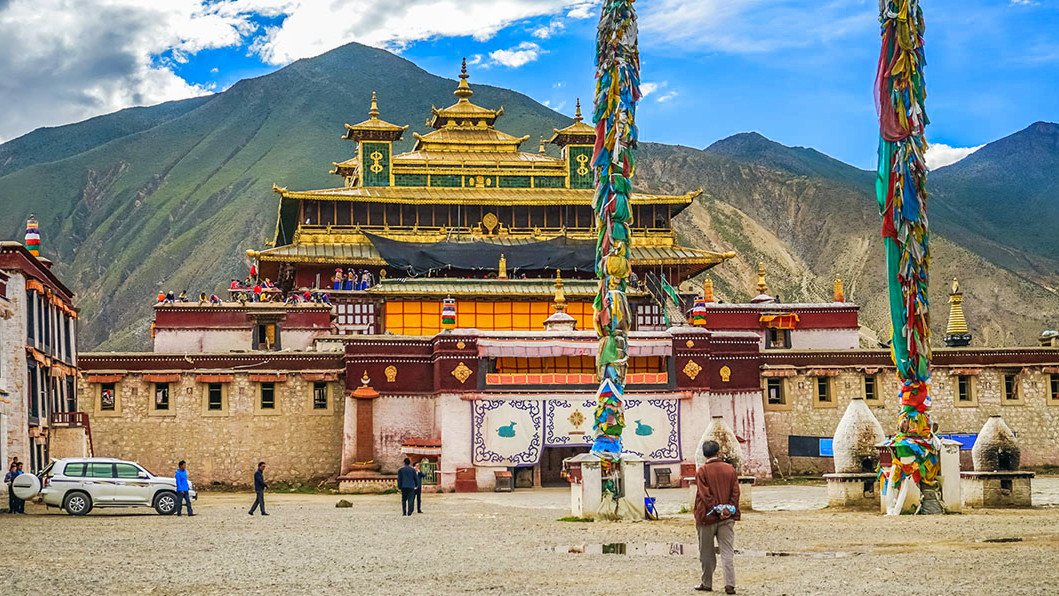
- Architectural Marvel: The layout of Samye Monastery is unique and symbolically structured to represent the Buddhist universe, described in the texts as a giant mandala. The central temple symbolizes Mount Meru, the center of the universe, surrounded by four larger temples and eight smaller ones, mirroring the continents and subcontinents of Buddhist cosmology. This layout makes Samye not just a monastery but a map of the cosmos, crafted in stone and wood.
- Cultural and Religious Significance: Samye is more than an architectural wonder; it's a living museum of the spiritual and cultural blossoming of Tibetan Buddhism. The monastery is adorned with numerous frescoes, statues, and scriptures that date back to its founding. These artifacts are not only artistically profound but also serve as primary sources of Buddhist teachings and the historical development of Buddhism in Tibet.
- Location and Setting: Situated in the Dranang Valley of central Tibet, the monastery lies against the picturesque backdrop of the Himalayas, surrounded by barren hills and the vibrant hues of the Tibetan plateau. The natural beauty around Samye adds a serene and majestic aura to the monastery, enhancing the spiritual experience for pilgrims and visitors alike.
- Pilgrimage and Tourism: Samye Monastery is accessible via a scenic drive from Lhasa, followed by a ferry ride across the Yarlung Tsangpo River, making the journey to Samye as memorable as the destination itself. For many, a visit to Samye is a pilgrimage, reflecting on the roots of Tibetan Buddhism and seeking blessings. For others, it's an opportunity to witness the intertwining of spirituality, culture, and nature.
Samye Monastery continues to be a cornerstone of Tibetan Buddhism, inviting those who seek not only religious insight but also a deeper understanding of how Buddhism sculpted the cultural and spiritual landscape of Tibet. Whether you are a pilgrim or a traveler, Samye offers a profound glimpse into the spiritual heritage that is central to Tibetan identity.
Mount Kailash: The Pilgrim’s Ultimate Quest
Mount Kailash, located in the remote western region of Tibet, stands as one of the most revered spiritual sites in Asia. This striking peak is not only significant for its geographical isolation and stunning natural beauty but also for its profound spiritual importance. Kailash is uniquely sacred to several religions, including Hinduism, Buddhism, Jainism, and Bon, each viewing the mountain as a divine embodiment central to their faith.
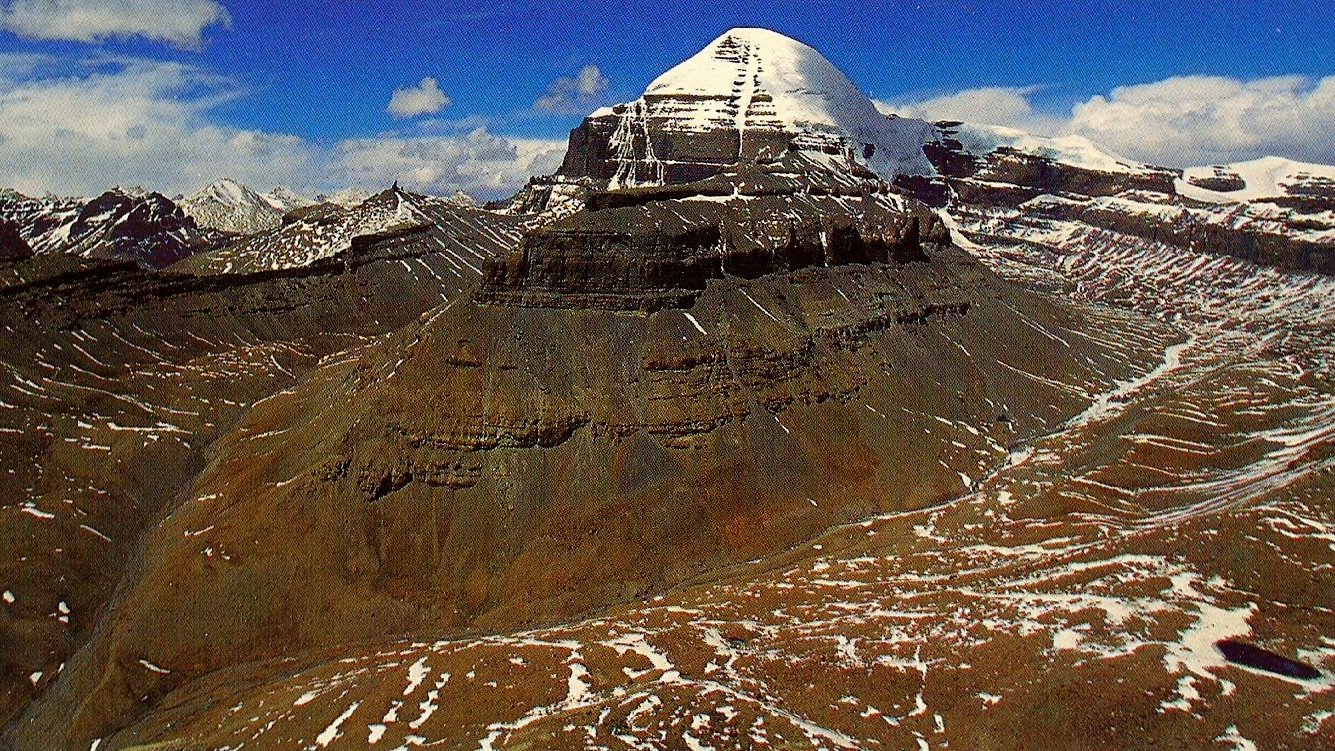
- Spiritual Significance: In Hindu tradition, Mount Kailash is considered the abode of Lord Shiva, where he resides at the summit in a state of perpetual meditation along with his wife Parvati. For Buddhists, it is the home of Demchok, a deity who represents supreme bliss. Jains believe that their first prophet attained enlightenment at Kailash, while followers of the Bon, Tibet's indigenous faith, regard it as the seat of all spiritual power.
- The Kailash Kora: A Pilgrimage of Transformation: The act of circling Mount Kailash, known as the Kailash Kora, is an essential pilgrimage for followers of these faiths. This demanding trek, which covers 52 kilometers around the sacred mountain, is believed to bring about spiritual cleansing and renewal. Pilgrims undertake this journey with deep reverence, often completing the circuit in a single day, although some take longer to immerse themselves fully in the spiritual experience.
- Challenging Terrain and Ethical Travel: The trek around Mount Kailash is challenging, passing through rugged terrain at high altitudes that can reach over 5,600 meters (18,400 feet) at the Dolma La Pass. The natural environment around Kailash is harsh yet breathtakingly beautiful, characterized by stark rock formations and crystal-clear blue skies. It is crucial for visitors to engage in ethical travel practices to preserve the sanctity and cleanliness of this sacred site. This includes carrying out all litter, respecting wildlife, and adhering to established paths to minimize environmental impact.
- Cultural Interactions and Local Life: The region around Mount Kailash is sparsely populated, home to nomadic herders and small settlements. Visitors have the opportunity to interact with locals, gaining insights into a lifestyle that has remained largely unchanged for centuries. These cultural exchanges can be profoundly enriching, offering perspectives on the deep spiritual connections that the people share with the landscape.
Mount Kailash remains one of the most elusive and awe-inspiring pilgrimage sites in the world. Its isolation and the physical demands of the journey to and around the mountain only enhance its allure, drawing seekers from around the globe looking to experience one of the planet’s most profound spiritual journeys.
Lake Namtso: Heaven on Earth
Lake Namtso, known as "Heavenly Lake," is one of the most captivating natural wonders in Tibet. As the second-largest saltwater lake in China and one of the highest-altitude lakes in the world, Namtso offers an ethereal blend of spiritual significance and breathtaking beauty, making it a revered destination not just for pilgrims but also for nature lovers and adventurers.

- Spiritual and Cultural Significance: In Tibetan, Namtso means 'Heavenly Lake,' a name that reflects its sacred status among the Tibetan people. The lake is considered a dwelling of the gods and has been a place of pilgrimage for centuries. Each year during the Tibetan Year of the Sheep, pilgrims from across Tibet and even from neighboring regions travel to Namtso to partake in ritual walks around the lake, a practice believed to bring blessings and cleanse the soul.
- Natural Beauty and Biodiversity: The lake's surface mirrors the sky, creating stunning visuals with changing colors from dawn to dusk. Surrounding Namtso are five uninhabited islands that serve as spiritual retreats for pilgrims, who may stay as long as the lake is frozen. The landscape around the lake is dramatic, with rugged hills and high peaks stretching into the distance, providing habitat for a variety of wildlife, including migratory birds, wild yaks, and rare species like the Tibetan antelope.
- Challenging Accessibility: Located at an altitude of over 4,700 meters (15,400 feet), reaching Lake Namtso can be challenging, especially due to thin air and unpredictable weather conditions. The journey itself is a significant part of the experience, traveling through winding roads and rugged landscapes that offer increasingly spectacular views as one approaches the lake.
- Tourism and Sustainability: The growth in tourism has brought both opportunities and challenges to Lake Namtso. While it provides economic benefits to the local communities, it also poses risks to the lake's natural environment. Efforts are continuously made to ensure that tourism is sustainable, focusing on preserving the ecological balance and maintaining the sacredness of the site. Visitors are encouraged to respect the natural and spiritual elements of Namtso, adhering to guidelines that help minimize their environmental impact.
Lake Namtso's combination of divine beauty and spiritual depth offers an unforgettable experience. It's a place where the grandeur of nature meets profound spiritual traditions, leaving visitors with a sense of awe and reverence. For many, a visit to Lake Namtso is not just a journey through physical space but also a deeper exploration of the soul.
Tashilhunpo Monastery: Seat of the Panchen Lama
Tashilhunpo Monastery, located in Shigatse, the second-largest city in Tibet, stands as a monumental and historic beacon of Tibetan Buddhism. Established in 1447 by Gendun Drup, the First Dalai Lama, it is one of the most important monasteries in Tibet and has traditionally been the seat of the Panchen Lama, the second most important spiritual leader in Tibetan Buddhism after the Dalai Lama.
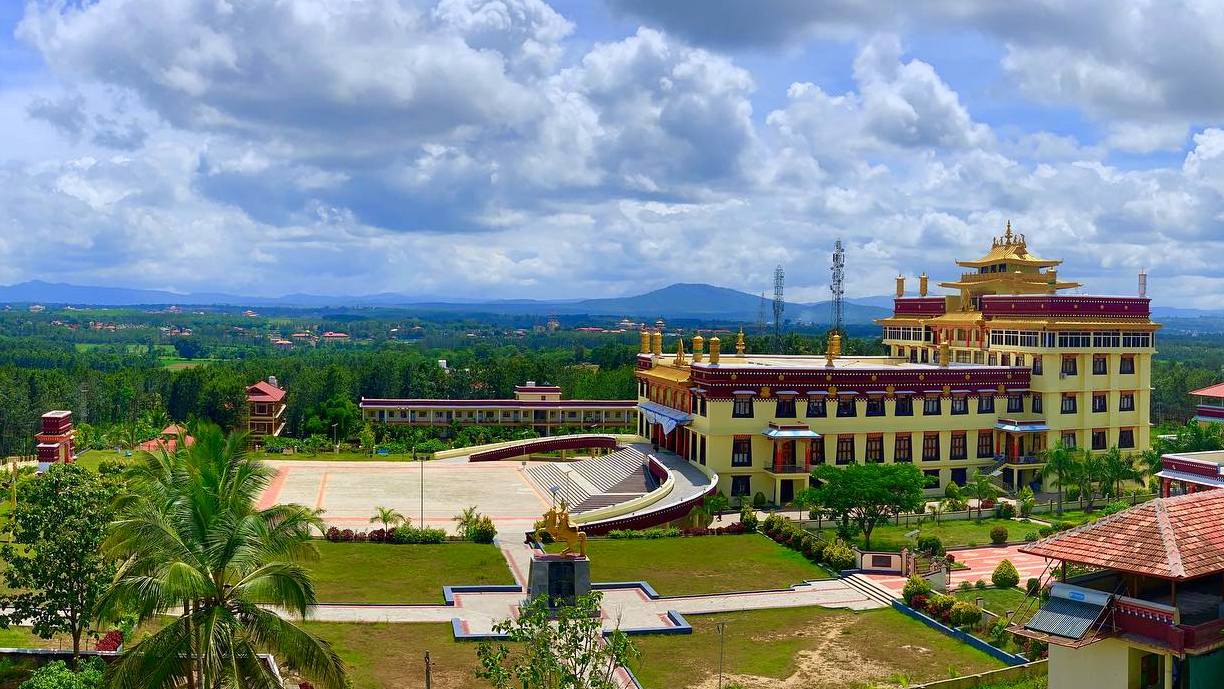
- Architectural and Cultural Heritage: The monastery spans a vast area with a complex of buildings that includes temples, chapels, and the residences of monks, all backed by the striking Nyenchen Tanglha mountain range. The architecture is a stunning example of traditional Tibetan design, characterized by vibrant colors, intricate wood carvings, and beautiful murals. The most famous structure within the monastery is the Maitreya Chapel which houses a giant statue of the Maitreya Buddha, the largest gilded statue in the world, standing at 26 meters (85 feet) high.
- Spiritual Significance: Tashilhunpo Monastery is a hub of religious activity and scholarly learning. It houses hundreds of monks who engage in religious study and spiritual practices. The monastery is also famous for its role in the identification and education of the Panchen Lamas. Historically, it has been a place of immense religious importance, where generations of Panchen Lamas have presided over religious ceremonies and contributed to the spread and evolution of Buddhism.
- Pilgrimage Site: For pilgrims, Tashilhunpo offers a rich tapestry of spiritual practices. The monastery is known for its annual festivals, particularly the Buddha Unfolding Festival, where a giant thangka (Buddhist religious painting) of the Buddha is displayed on a hillside, drawing thousands of pilgrims and visitors. This event is a vibrant spectacle of faith, color, and devotion, providing a deep insight into Tibetan religious culture.
- Visitor Experience: Visitors to Tashilhunpo Monastery can explore the numerous chapels and halls, each adorned with religious artifacts, statues, and thangkas. Guided tours often include visits to the main assembly hall, the tombs of past Panchen Lamas, and various other points of interest within the monastery. The experience is both educational and spiritual, offering insights into the practices and traditions of Tibetan Buddhism.
- Preservation and Tourism: As with many historic sites in Tibet, preserving the cultural heritage of Tashilhunpo Monastery while accommodating growing numbers of tourists presents ongoing challenges. Efforts are made to balance accessibility with preservation, ensuring that the sacredness of the monastery is maintained for future generations.
Tashilhunpo Monastery not only offers a window into the profound spiritual practices of Tibetan Buddhism but also serves as a living center for Buddhist learning and culture. Its historical significance and the ongoing spiritual practices make it an essential destination for anyone seeking to understand the religious landscape of Tibet.
Rongbuk Monastery and the North Face of Everest
Rongbuk Monastery, nestled dramatically at the base of the North Face of Mount Everest, holds the distinction of being the highest monastery in the world. Located in the remote solitudes of Tibet, this monastery offers unparalleled views of Mount Everest and serves as a significant spiritual site for both pilgrims and adventurers.
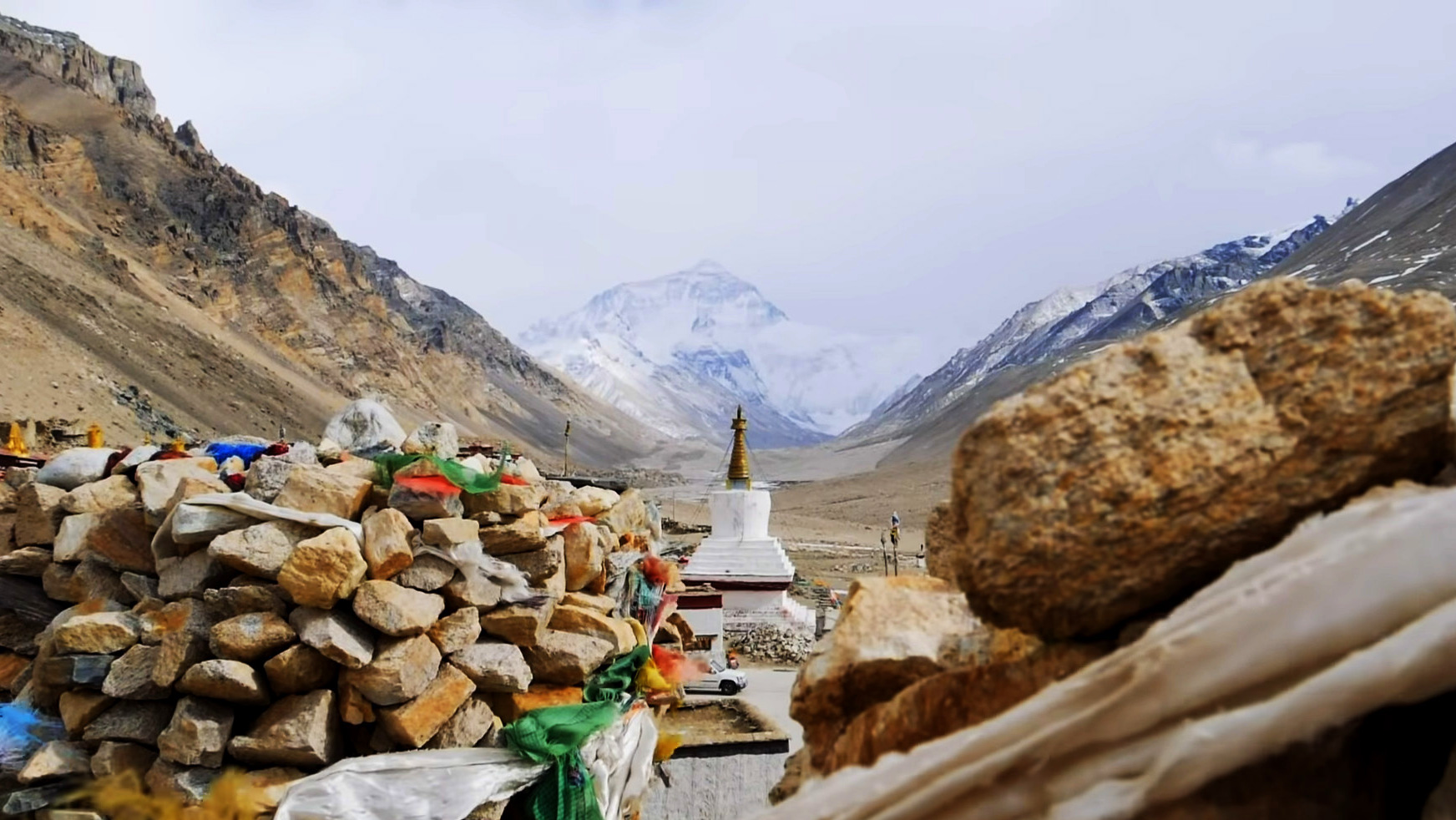
- Historical and Spiritual Significance: Established in 1902 by a Nyingmapa Lama, Rongbuk Monastery has long been a site of Buddhist meditation and retreat. Despite its small size, the monastery is an important spiritual center for the Sherpa community and those who live in the surrounding Himalayan regions. It traditionally serves as a rest point for climbers attempting the summit of Everest from the north route, blending the worlds of spirituality and mountaineering.
- Architectural Features: The architecture of Rongbuk Monastery is modest yet strikingly beautiful, adapted to the harsh climatic conditions of its high-altitude environment. The monastery complex includes a main hall adorned with murals depicting scenes from the life of the Buddha and the adventures of past climbers who have ventured onto Everest's slopes.
- The Everest View: The views from Rongbuk Monastery are simply breathtaking. Visitors and pilgrims alike are often left awe-struck by the close-up vistas of the north face of Mount Everest. The view from here is considered one of the best vantage points for appreciating the true majesty of the world's highest peak.
- Cultural and Touristic Hub: Rongbuk Monastery is not just a place of worship but also a cultural hub for visitors seeking to understand the region's unique blend of nature and spirituality. The monastery hosts an annual Mani Rimdu festival, which features masked dances and religious ceremonies, attracting visitors from around the globe. This festival is a vibrant expression of the rich cultural heritage of the Khumbu region.
- Sustainable Tourism: As tourism continues to grow, sustainable practices are crucial in preserving both the natural environment around Everest and the cultural integrity of Rongbuk Monastery. Efforts are made to ensure that tourism does not disrupt the monastic life and that the environmental impact on the fragile ecosystem is minimized.
Visiting Rongbuk Monastery provides an unparalleled opportunity to engage with the spirituality of the Himalayas while enjoying one of the most iconic views on earth. It remains a beacon for those seeking solitude, spiritual enrichment, and a connection with the majestic power of Mount Everest.
Best Time to Explore Tibet
Exploring Tibet offers a unique and mesmerizing experience, but due to its high altitude and harsh climate, the timing of your visit can significantly impact your experience. The best time to explore Tibet is generally from April to October.
Spring (April to June): Spring is a fantastic time as the weather begins to warm up and the landscape starts to bloom. The temperatures are comfortable, typically ranging from 10°C to 20°C (50°F to 68°F), and the skies are clear, offering great conditions for sightseeing and photography. This period is before the rainy season, so you'll likely encounter fewer travel disruptions.
Summer (July to August): These are the warmest months, with temperatures sometimes reaching up to 25°C (77°F). However, this is also the rainy season, which might lead to occasional travel interruptions, especially in rural areas. Despite the rain, summer is a popular time for festivals, including the Shoton Festival in Lhasa, which attracts many visitors with its vibrant displays of culture and the dramatic unfurling of a giant thangka at Drepung Monastery.
Autumn (September to October): Autumn is considered one of the best times to visit Tibet. The weather remains pleasant, and the summer rains leave behind a fresh, clear atmosphere and lush landscapes. The clear skies provide excellent conditions for mountain views, making it an ideal time for trekking and outdoor activities. Temperatures during these months can range from 12°C to 20°C (54°F to 68°F).
Winter (November to March): Winter in Tibet is extremely cold, with temperatures often dropping below freezing. However, it is also the least crowded time to visit, and you can enjoy the stunning winter scenery with fewer tourists. The Potala Palace in the snow is a breathtaking sight, and winter is also a good time to experience Tibetan New Year (Losar) celebrations if you don't mind the cold.
Visiting during the recommended periods of April to October ensures that you can fully appreciate Tibet's stunning natural beauty and cultural richness in more favorable weather conditions.
Travel Tips for the Spiritual Heart of Tibet: Ethical Practices and Breathtaking Locations
Traveling to Tibet can be an extraordinary journey into the heart of one of the world's most spiritually significant and geographically isolated regions. Here are essential travel tips for making the most of your visit to "The Spiritual Heart of Tibet: Ethical Practices and Breathtaking Locations":
- Obtain the Necessary Permits: Tibet has specific entry requirements. All foreign visitors need a Chinese visa and a Tibet Travel Permit, which can only be arranged through a licensed travel agency. Depending on your itinerary, additional permits like the Alien Travel Permit or the Military Area Permit might be required.
- Acclimatize Properly: Due to Tibet's high altitude, acclimatizing to reduce the risk of altitude sickness is crucial. Spend a few days in a city at moderate altitude before ascending to higher areas. Once in Tibet, take it easy for the first few days to adjust to the thinner air.
- Respect Local Customs and Religion: Tibet is a culturally sensitive area with deep Buddhist traditions. Dress modestly, especially when visiting monasteries. Always walk clockwise around temples and other religious structures. Show respect by not touching religious artifacts or photographing monks and pilgrims without permission.
- Support the Local Economy: Engage with local Tibetan businesses whenever possible. Eat at local restaurants, stay at locally owned hotels, and buy handmade goods from local artisans. This helps keep the economic benefits of your visit within the community.
- Travel Sustainably: Be mindful of your environmental impact. Carry a reusable water bottle, avoid plastic bags, and manage your waste properly, especially in remote areas. Opt for shared transportation or electric vehicles when available to minimize pollution.
- Prepare for Basic Conditions: While major cities like Lhasa offer comfortable accommodations, more remote areas might only have basic facilities. Prepare for potentially harsh weather conditions, especially if traveling in the colder months. Packing layers and investing in good quality, warm clothing is essential.
- Learn a Few Phrases of Tibetan: Knowing basic phrases in Tibetan can go a long way in showing respect and enhancing your interactions with locals. Even simple greetings can help bridge cultural gaps and enrich your travel experience.
- Stay Informed and Flexible: Tibetan politics and policies can change rapidly. Keep yourself informed about the current situation through your travel agency or international news. Be prepared for last-minute changes in your travel plans.
- Invest in Travel Insurance: Ensure you have comprehensive travel insurance that covers high altitude trekking and medical evacuation, if necessary. Healthcare facilities in Tibet are limited, especially outside of Lhasa, and having good insurance is crucial.
By following these travel tips, you can ensure your journey to Tibet is not only memorable and enriching but also respectful and positive in terms of your impact on this unique and sacred landscape.
The Spiritual Heart of Tibet Travel is not just a choice but a responsibility, especially when visiting spiritually and naturally significant destinations like Tibet. By adopting respectful behaviors, supporting local economies, and minimizing our environmental impact, we contribute to the preservation of these extraordinary places for future generations. As travelers, it is essential to move beyond mere sightseeing and engage in deeper, more meaningful interactions with the places and people we encounter. By doing so, we turn our journeys into a force for good, fostering mutual understanding and sustainable development across the globe. Let us travel with mindfulness and compassion, embracing the true essence of each destination we visit.
FAQs of the Spiritual Heart of Tibet: Ethical Practices and Breathtaking Location
Q: What is the best time of year to visit Tibet?
A: The ideal time to visit Tibet is from April to October when the weather is most favorable. This period avoids the harsh winter cold and the rainy season, providing clear days and more accessible travel routes.
Q: How can I ensure my visit is respectful to local customs?
A: Educate yourself about Tibetan culture before your trip. Dress modestly, especially when visiting monasteries and temples. Always ask for permission before taking photos of people or religious sites, and participate quietly in any local festivals or rituals.
Q: What are some must-visit ethical attractions in Tibet?
A: Must-visit sites include the Potala Palace, Jokhang Temple, and Mount Kailash. For a truly ethical experience, engage with local tour guides who can provide insights into the spiritual and cultural significance of these sites.
Q: How can I support the local economy during my visit?
A: Support local artisans by purchasing handmade crafts directly from them. Eat at local restaurants, use local transportation options like buses and rickshaws, and stay in locally-owned accommodations.
Q: What should I bring to Tibet to minimize my environmental impact?
A: Pack reusable water bottles, bags, and utensils. Carry all your trash out of remote areas. Use solar chargers and other sustainable gadgets to lessen your reliance on limited local resources.
Q: Are there any specific health concerns I should be aware of when traveling to high-altitude areas like Tibet?
A: High altitude can pose risks such as Acute Mountain Sickness (AMS). Acclimatize slowly, stay hydrated, and consider consulting with a doctor before your trip regarding altitude sickness medication.
Q: How can I engage with local communities ethically?
A: Participate in community-based tourism where possible. This might include staying with a local family, taking part in a village tour, or learning a craft or cooking technique. Always approach these experiences with respect and curiosity about the local way of life.

